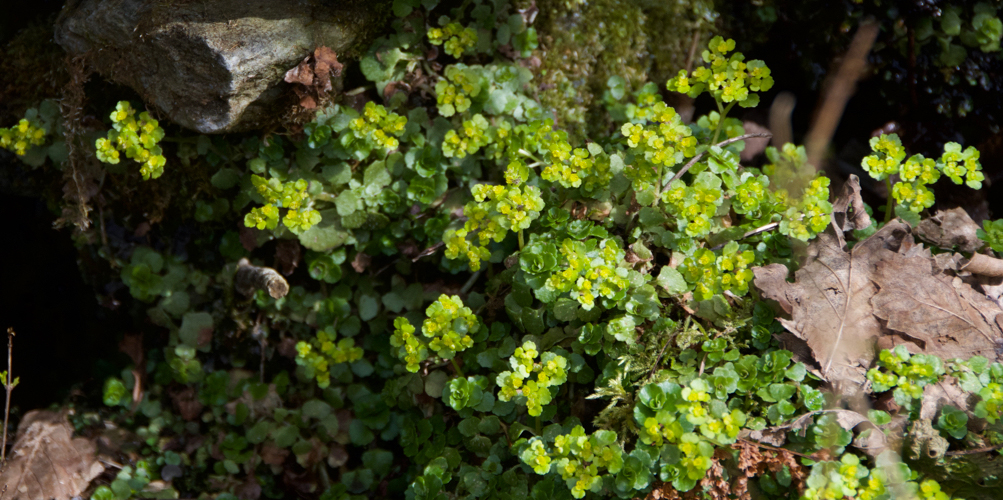
Golden saxifrage
On a walk in some welcome sunshine at the beginning of April, we noticed masses of golden saxifrage flowering in the verges.
This pretty little wayside plant tends to get overlooked because it’s not overly flamboyant. It does, however, have delicate flowers which are worth a closer look, even if it means getting on your hands and knees in damp places!
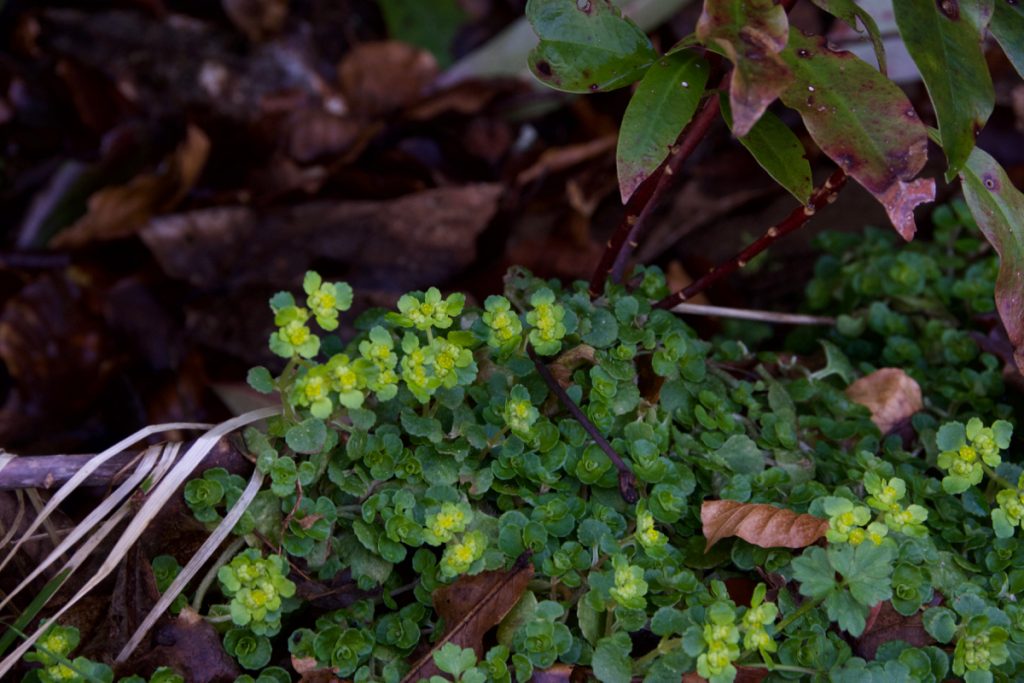 The species we found is correctly known as Opposite-leaved Golden-saxifrage (Chrysosplenium oppositifolium), which is sometimes and understandably confused with its very similar cousin, Alternate-leaved Golden-saxifrage (Chrysosplenium alternifolium). From what I can make out, however, the Opposite-leaved variety is more common in the west of Britain, preferring acid soils.
The species we found is correctly known as Opposite-leaved Golden-saxifrage (Chrysosplenium oppositifolium), which is sometimes and understandably confused with its very similar cousin, Alternate-leaved Golden-saxifrage (Chrysosplenium alternifolium). From what I can make out, however, the Opposite-leaved variety is more common in the west of Britain, preferring acid soils.
This pretty little plant loves cool, damp, shady places, and seems to be happiest near running water – of which there has been a plentiful supply just lately. We found it rioting in the ditches, along with ferns, mosses and the heart-shaped leaves of celandine. Its habit seems to mimic the bubbling, tumbling action of water itself, and its clusters of flowers draw the eye as they appear to be catching the sun, even if sunlight isn’t falling on them directly.
Opposite-leaved Golden-saxifrage is the county flower of Clackmannanshire.
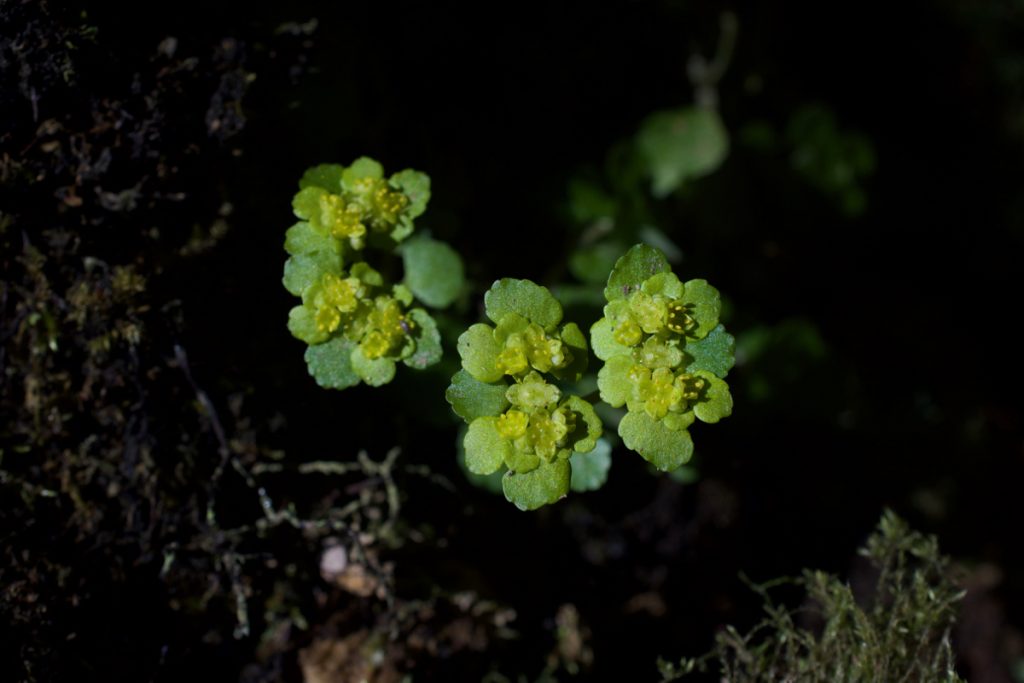 Opening between April and June, the tiny flowers of golden saxifrage have no petals. Instead, eight yellow stamens are surrounded by four golden sepals which in turn are flanked by rounded yellowish-green leaves. The graduated tones, set against the mass of rich green foliage, are really lovely!
Opening between April and June, the tiny flowers of golden saxifrage have no petals. Instead, eight yellow stamens are surrounded by four golden sepals which in turn are flanked by rounded yellowish-green leaves. The graduated tones, set against the mass of rich green foliage, are really lovely!
Look for Opposite-leaved Golden-saxifrage beside streams, in damp woodland, boggy places, and even on wet mountain slopes. These photographs (below) show it flourishing by the side of St Fillan’s Well, a natural spring which is possibly an ancient healing well.
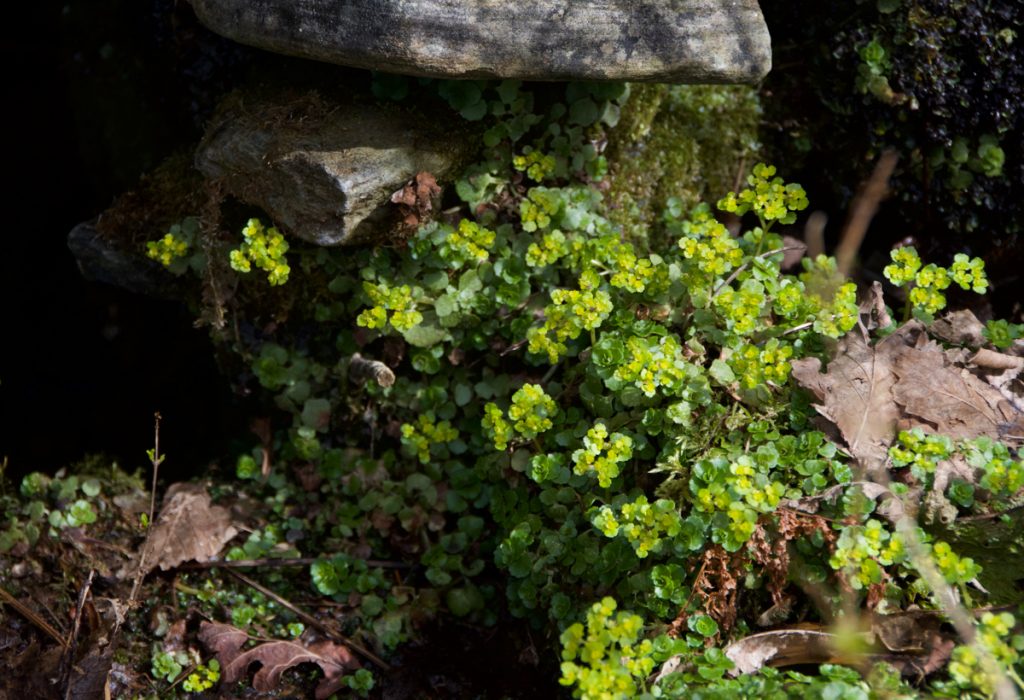
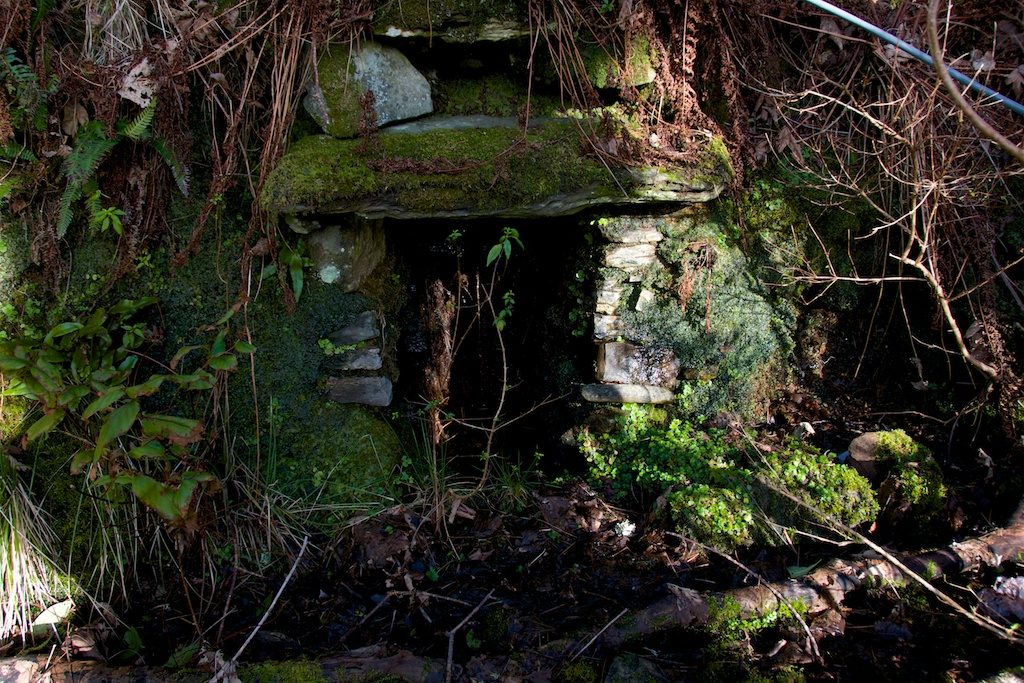
Go to Wildflowerfinder.org.uk to compare Opposite-leaved and Alternate-leaved Golden-saxifrage.
References:
Photos copyright © Jo & Colin Woolf


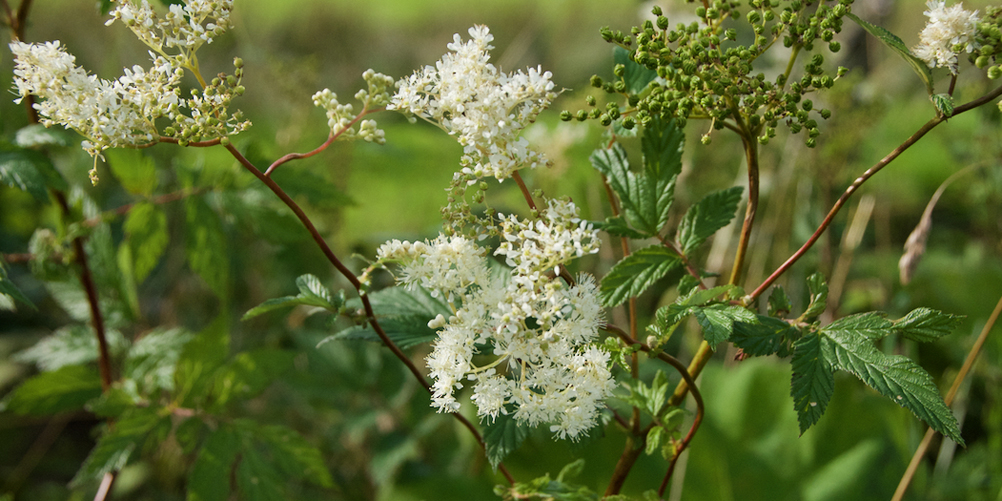
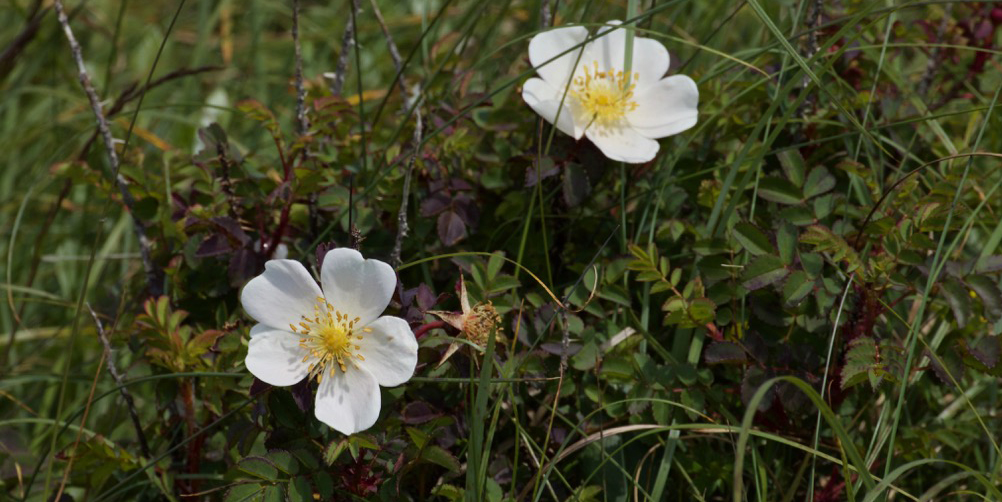
12 Comments
Dick Walters
Very nice blog with good pictures. Keep up the great work.
Jo Woolf
Thank you, Dick! Glad you enjoyed it.
Pat
These are delightful! I love finding little gems like this.
Jo Woolf
So do I, Pat! 🙂 They’re lovely, aren’t they?
Edith Douglas
Really lovely plant & photos. Along with rocks and stones and trees I am particularly attracted to shiny leafed plants, so in this post you hit them all! Thanks.
Jo Woolf
I think they’re so pretty, like many of the shy woodland plants that come later. I’m looking forward to seeing wood sorrel and wood anemones, and bluebells of course!
montucky
What a pretty plant! We have several species of saxifrage here too, but not that one. It would be welcome here though!
Jo Woolf
I know, so pretty! We have several other species too, most with more obvious and colourful flowers, but I still like the delicate beauty of this one.
Elaine McDonald
Thank you so much for your emails . I really look forward to them , They inspire ,cheer and inform me
You write so beautifully it is a joy to read . I love the new website it is excellent.
Jo Woolf
Oh that’s really kind, Elaine! Thank you so much. It’s a delight to know how much my posts are enjoyed, and I am glad you love the new site! 🙂
Sandra
I’ve been enjoying lots of this in recent days. It’s everywhere here! Yet I’ve not noticed it in our previous two springs here. All that rain has its advantages!
Jo Woolf
It does seem very abundant here too! Yes, the rain does have advantages, feeds the moss and the lichens, keeps all the waterfalls flowing and the countryside green! I try to remember that when it’s pitch dark and tipping with rain and the cats refuse to go out! 🙂